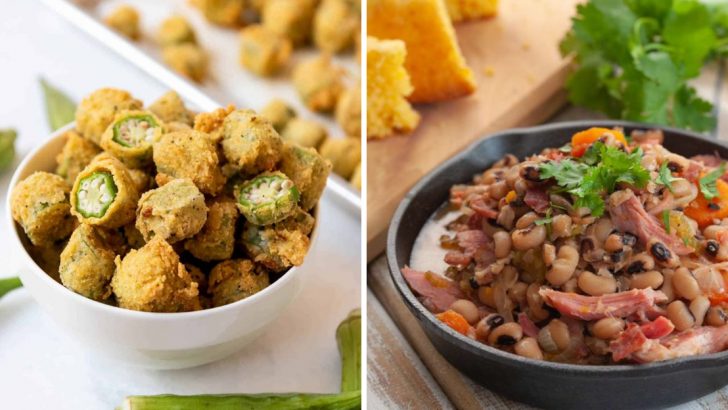Southern kitchens have a way of serving up dishes that spark curiosity, admiration—and sometimes hesitation. While some regional specialties leave outsiders raising an eyebrow, others are pure comfort disguised as unfamiliar.
This is a tour of the bold, the strange, and the downright delicious. For every plate that gets a polite “no thanks,” there’s another worth crossing state lines for.
1. Fried Alligator
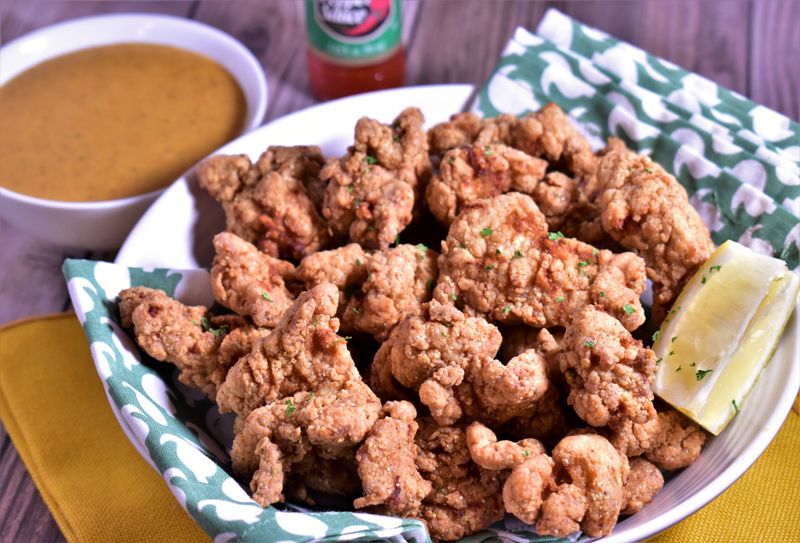
Gator meat transforms from swamp creature to culinary delight in the skilled hands of Southern cooks. Tender chunks of alligator tail marinate in buttermilk before being coated in seasoned cornmeal and fried to golden perfection.
The resulting flavor falls somewhere between chicken and fish with a uniquely firm texture that captivates adventurous eaters. Locals often serve it with a spicy remoulade or hot sauce for dipping.
2. Chicken And Waffles

Sweet meets savory in this unlikely marriage of breakfast and dinner. Crispy fried chicken perches atop fluffy Belgian waffles, creating a contrast that delights taste buds with every bite. The origins remain debated, with some tracing it to Pennsylvania Dutch country and others to Harlem jazz clubs of the 1930s.
Regardless of history, the dish found its spiritual home in Southern cuisine. Diners drizzle maple syrup over the entire plate, sometimes adding hot sauce for an extra kick.
3. Grits
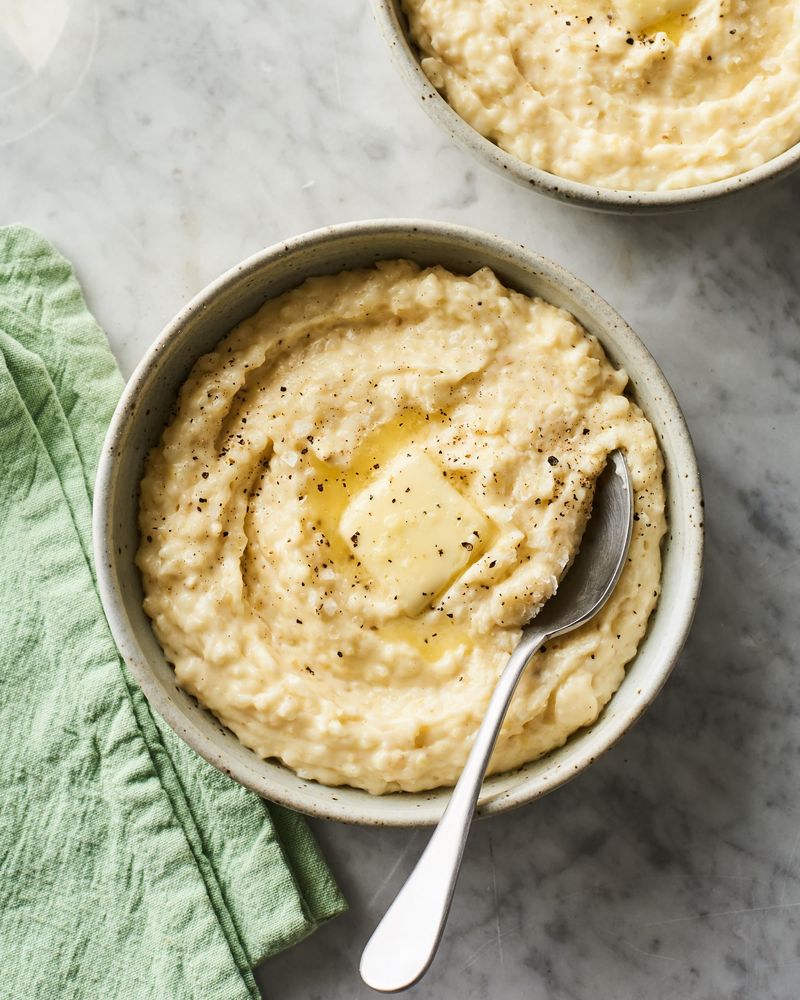
Ground corn kernels transform into creamy comfort through slow cooking in this quintessential Southern breakfast staple. Native Americans introduced early settlers to this humble dish, which sustained generations through lean times.
Preparation varies dramatically by region – coastal areas might fold in fresh shrimp and bacon, while inland cooks often top theirs with red-eye gravy and country ham. The texture should never be runny but rather thick enough to hold a spoon upright.
4. Boiled Peanuts

Raw peanuts simmer for hours in heavily salted water until they develop a soft, bean-like consistency unlike their roasted counterparts. Roadside stands throughout Georgia, Alabama, and South Carolina sell them by the bagful, often with handwritten signs announcing “Hot Boiled P-nuts.”
The traditional preparation calls for nothing more than salt, but adventurous cooks might add cajun seasoning or hot peppers to the pot. First-timers should approach with an open mind – the texture surprises those expecting crunch, but the addictive, earthy flavor keeps fans coming back for more.
5. Collard Greens
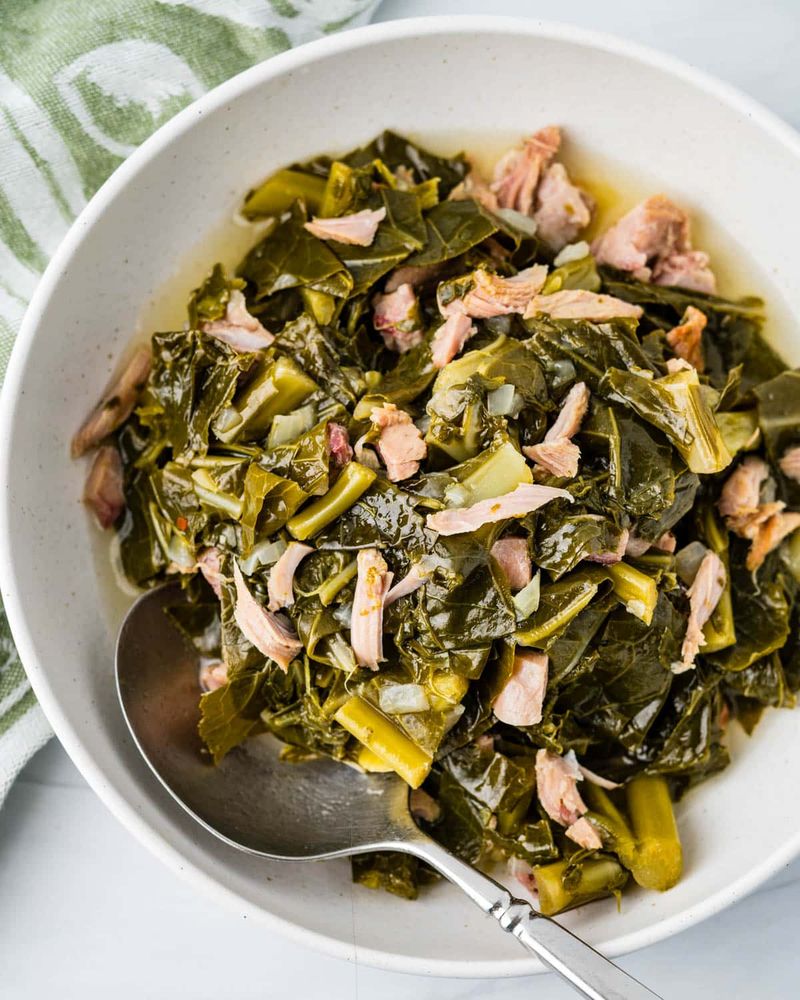
Leafy greens surrender their bitterness during long, slow cooking with smoky ham hocks or fat back in this soul food essential. Every family guards their recipe, with variations including vinegar splashes, red pepper flakes, or sugar pinches to balance flavors.
African slaves introduced collards to American soil, adapting cooking techniques from their homeland to make tough greens palatable. The resulting potlikker—the nutrient-rich liquid left in the pot—became as prized as the greens themselves, often sopped up with cornbread.
6. Fried Green Tomatoes
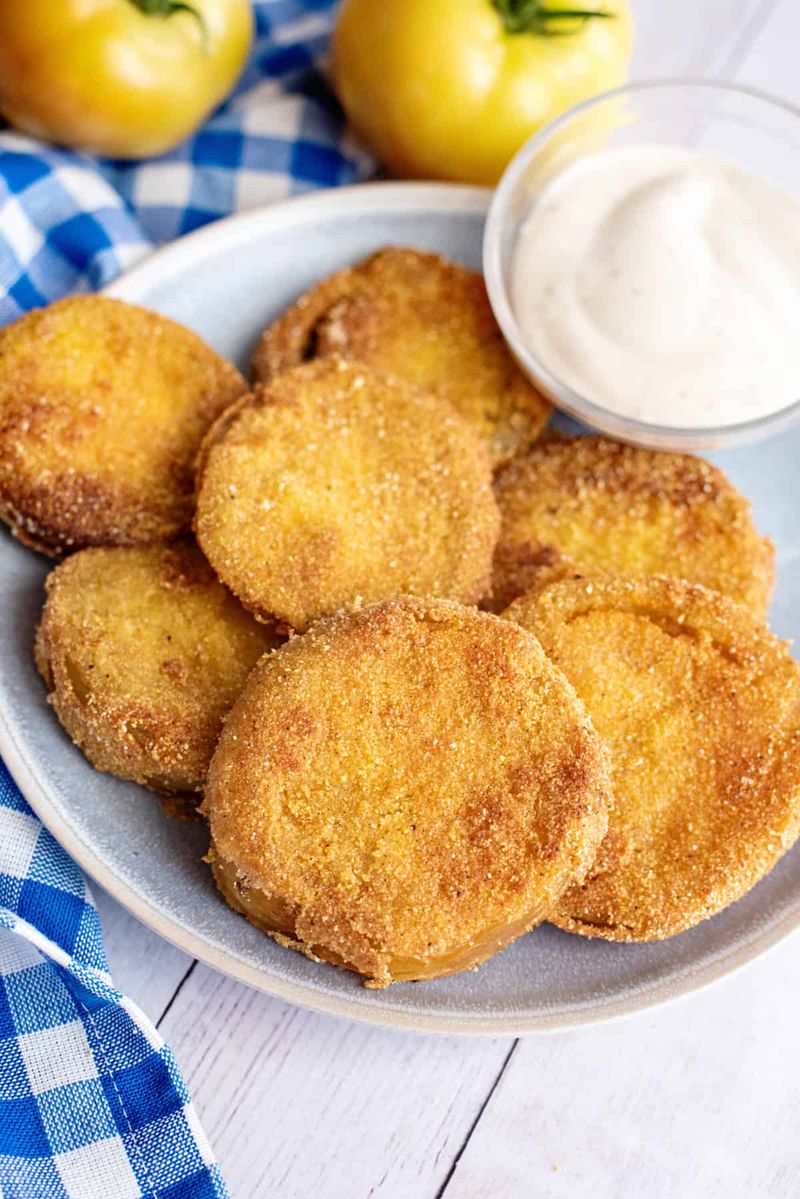
Unripe tomatoes, sliced thick and dredged in cornmeal, sizzle in cast iron skillets across the South. Their tangy interior contrasts beautifully with the crispy exterior, creating a textural marvel that transcends their humble origins.
Though popularized by the 1991 film of the same name, these tart treats predated Hollywood by generations. Farm families developed the dish as a practical way to use tomatoes that wouldn’t ripen before frost. Modern restaurants elevate them with goat cheese, remoulade, or even as foundations for creative Benedicts.
7. Hush Puppies
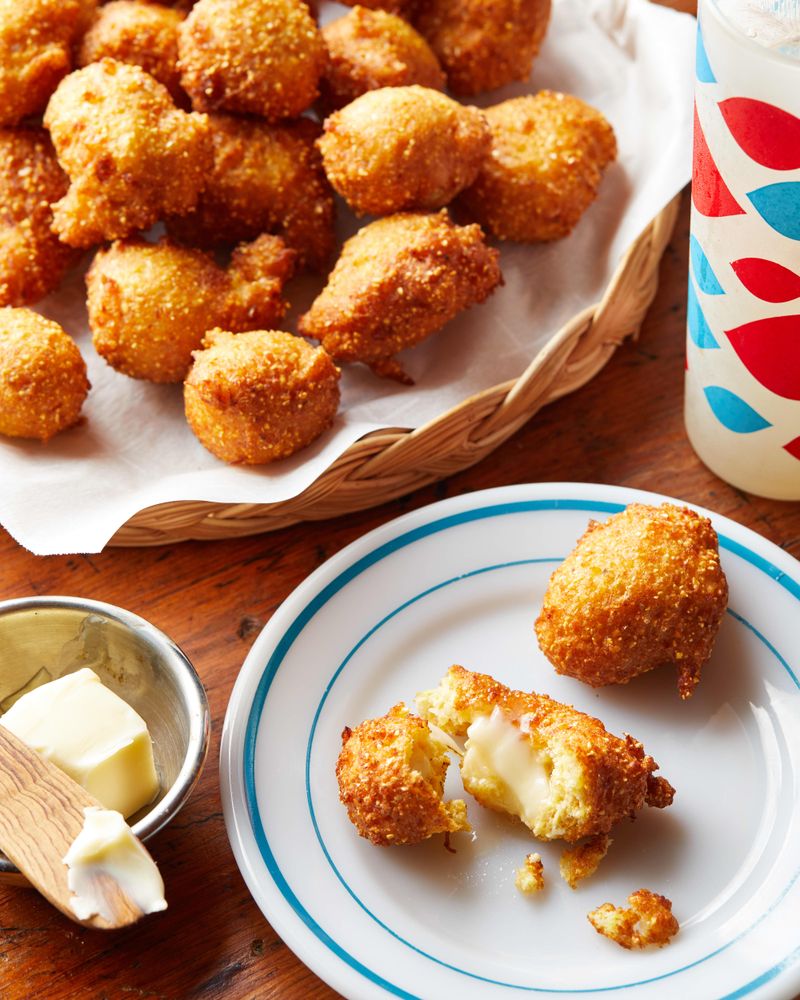
Golden orbs of cornmeal batter, crisp outside and tender inside, accompany fish fries and barbecues throughout the Southern states. These humble fritters gained their curious name, according to folklore, when cooks tossed scraps to barking dogs with the command “Hush, puppy!”
The basic recipe combines cornmeal, flour, eggs, and buttermilk, but regional variations abound. Some add minced onion or jalapeño for kick, while others incorporate corn kernels or even beer into the batter.
8. Biscuits And Gravy

Flaky buttermilk biscuits split open and smothered with creamy sausage gravy form the cornerstone of hearty Southern breakfasts. This dish emerged from necessity during lean times when scraps of meat could be stretched with flour and milk to feed hungry families.
The gravy begins with pork sausage browned in a pan, creating flavorful drippings that form the base when combined with flour. Whole milk transforms the mixture into velvety gravy that clings perfectly to each biscuit morsel.
9. Country Ham
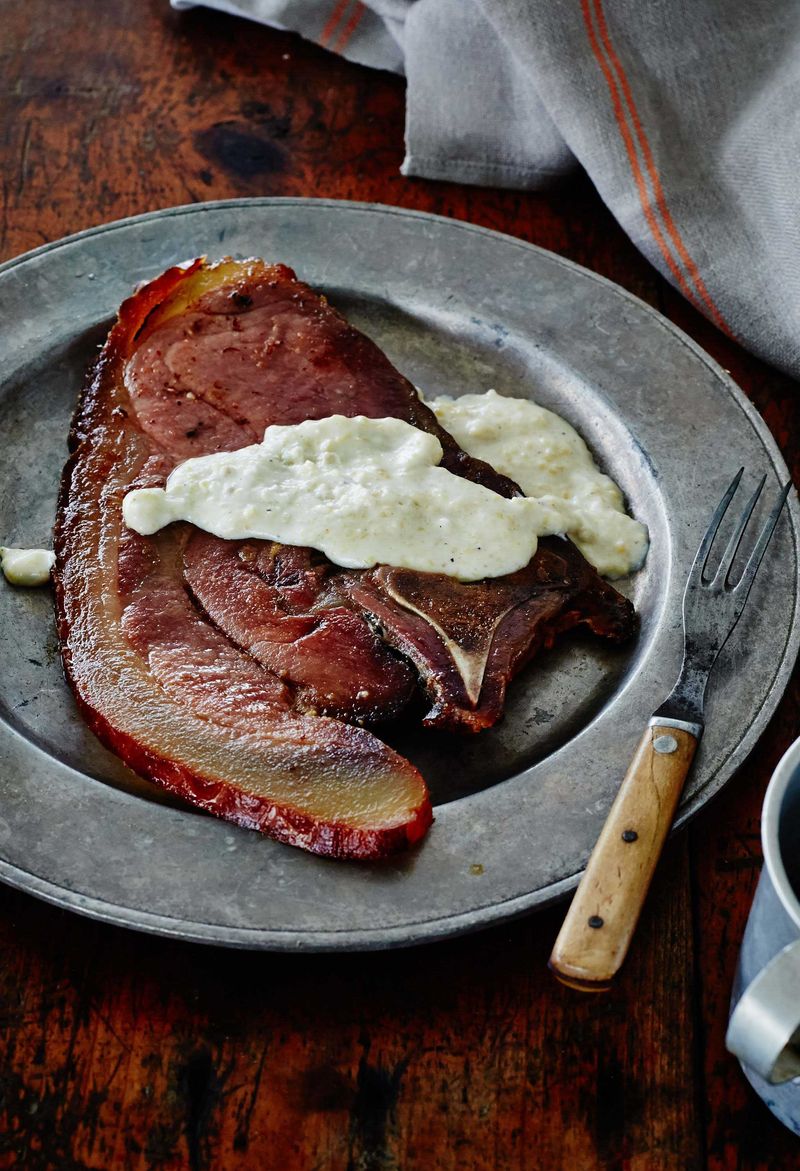
Salt-cured pork hind legs hang aging for months or even years before becoming the intensely flavored delicacy known as country ham. Unlike its milder city ham cousin, this preservation method dates back to pre-refrigeration days when smoking and curing were necessities rather than flavor choices.
Virginia, Tennessee, Kentucky, and North Carolina each claim distinctive regional styles. The aging process concentrates flavors to create a deeply savory, sometimes almost funky profile that devotees crave. Proper preparation requires soaking to remove excess salt before cooking.
10. Pimento Cheese
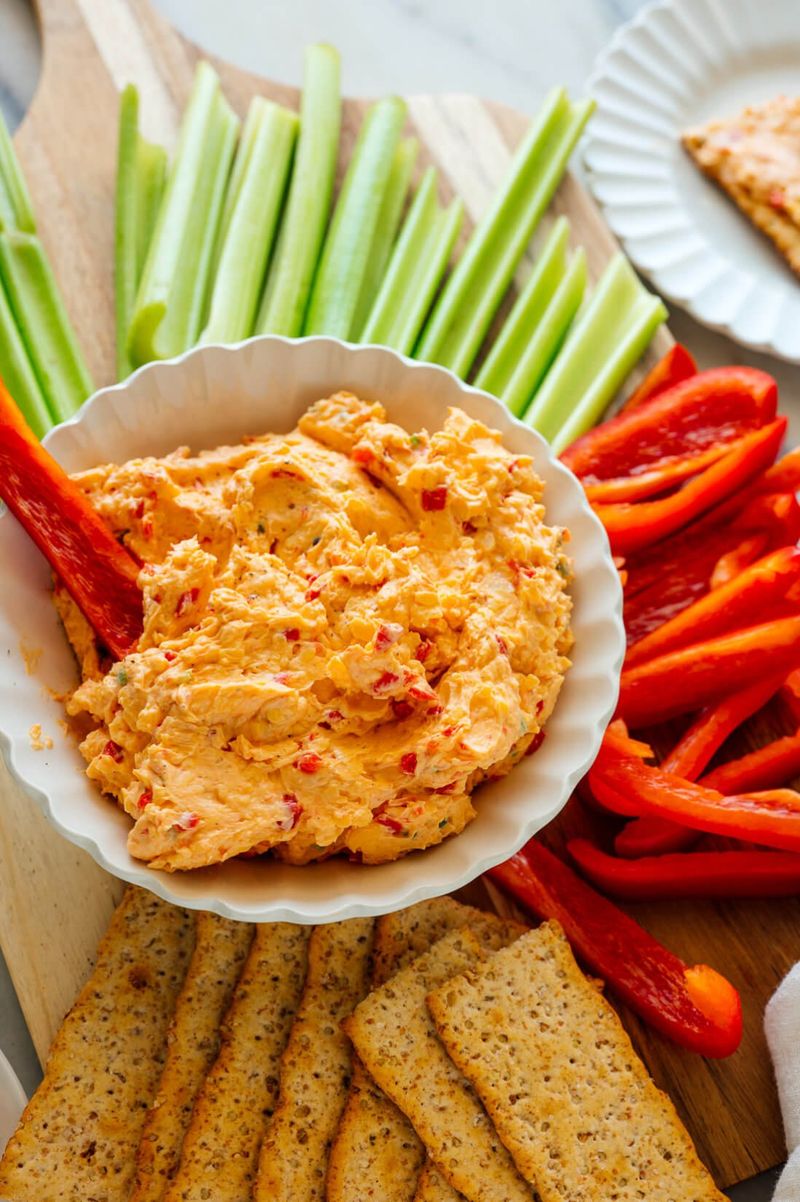
Sharp cheddar cheese blends with mayonnaise and sweet pimento peppers in this spreadable Southern institution sometimes called “Carolina caviar.” Church gatherings, picnics, and cocktail parties throughout the region feature this versatile spread on everything from celery sticks to burger toppings.
The texture varies by preference – some like it chunky while others prefer a smooth consistency achieved through food processors. Additional ingredients might include cream cheese for richness, jalapeños for heat, or even bourbon for complexity.
11. Cornbread
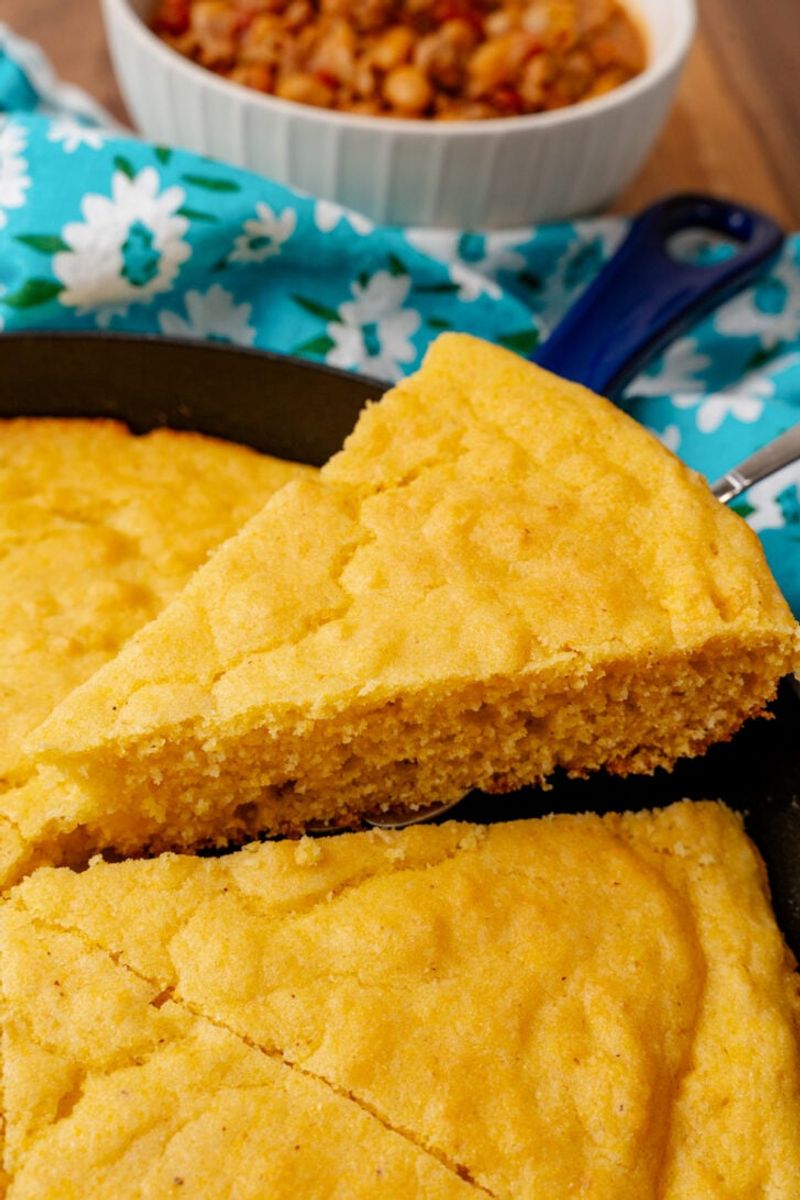
Golden crusted and fragrant, traditional Southern cornbread emerges from screaming hot cast iron skillets in kitchens across Dixie. Unlike its sweeter Northern counterpart, authentic Southern versions contain minimal sugar, letting the corn’s natural flavor take center stage.
The debate between white and yellow cornmeal divides families and regions alike. Purists insist on stone-ground varieties that retain the corn’s germ, providing deeper flavor and coarser texture. Buttermilk adds tanginess while a touch of bacon grease in the skillet creates the coveted crispy bottom crust.
12. Frog Legs

Amphibian delicacies arrive on Southern tables lightly dusted with seasoned flour and fried until tender. The meat, often compared to chicken but with delicate sweetness, pulls easily from slender bones when properly prepared.
Louisiana claims frog legs as a Cajun staple, though the dish appears throughout the South wherever bullfrogs grow large enough to harvest. Preparation typically keeps seasoning minimal to highlight the natural flavor. Garlic butter often accompanies them as a dipping sauce, adding richness without overwhelming the subtle meat.
13. Okra
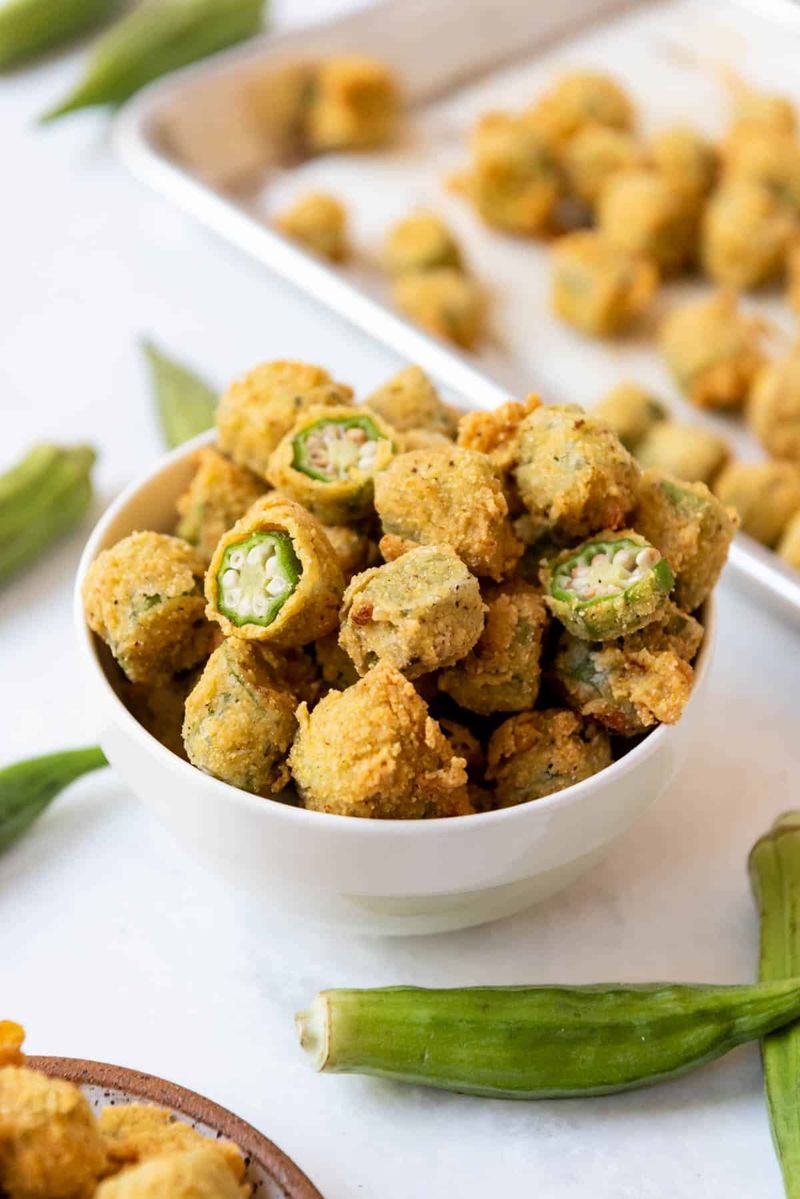
Green seed pods brought from Africa during the slave trade became essential to Southern cooking, appearing in gumbos as thickener or fried crisp as a beloved side dish.
The distinctive vegetable’s mucilaginous quality – politely called “slime” by detractors – transforms into culinary magic in knowledgeable hands. Sliced and fried in cornmeal, okra develops a crunchy exterior that counteracts any slippery texture. Quick cooking at high heat helps maintain its bright color and pleasant bite.
14. Shrimp and Grits

Humble fisherman’s breakfast evolved into sophisticated restaurant fare without losing its soulful essence in this coastal Carolina classic. Plump shrimp, often sautéed with bacon and aromatics, crown a bed of creamy stone-ground grits.
Charleston claims ownership of this dish’s refinement, though variations appear throughout the Gulf Coast and Low Country. The shrimp preparation varies dramatically – some versions incorporate tomatoes and spices reminiscent of Creole cooking, while others maintain simplicity with just garlic and lemon.
15. Gumbo

Complex stew simmers for hours, blending African, French, and Native American influences into Louisiana’s signature dish. The foundation begins with roux – flour cooked in fat until it reaches the desired shade of brown, ranging from peanut butter to chocolate depending on regional preference.
Creole versions typically include tomatoes while Cajun varieties omit them. Both styles incorporate the “holy trinity” of bell pepper, onion, and celery. Proteins vary widely – seafood, chicken, sausage, or combinations thereof make appearances based on availability and tradition.
16. Sweet Tea

Amber liquid flows freely at Southern gatherings, so sweet it makes yankee teeth ache and so essential it earned designation as the “house wine of the South.” This isn’t merely tea with sugar – it’s a carefully crafted beverage where sugar dissolves into hot tea before cooling creates the signature refreshment.
The proper ratio remains fiercely debated across state lines. Some regions prefer teeth-tingling sweetness while others take a more moderate approach. Orange pekoe black tea forms the traditional base, though adventurous brewers might add mint, peach, or even bourbon for adult variations.
17. Pecan Pie

Buttery nuts suspended in sweet custard fill flaky crusts across the South, particularly during holiday seasons. This indulgent dessert showcases the region’s native pecan trees, which produce nuts prized for their rich, buttery flavor.
The filling combines eggs, sugar, corn syrup, and vanilla into a base that caramelizes around the nuts during baking. Regional variations might incorporate bourbon, chocolate, or even a touch of vinegar to cut the sweetness.
18. Crawfish Boil

Newspaper-covered tables groan under mountains of bright red crustaceans at this communal feast central to Louisiana culture. Tiny freshwater lobsters boil with corn, potatoes, sausage, and generous spice blends before being dumped ceremoniously for everyone to share.
The technique for extracting meat requires demonstration for newcomers – twist, peel, pinch, and suck the head (where flavor concentrates) if you’re brave. Seasoning varies from mild to tear-inducing spicy, often incorporating commercial blends like Zatarain’s or family secret recipes guarded for generations.
19. Banana Pudding

Layers of vanilla custard, sliced bananas, and vanilla wafers meld into creamy perfection in this beloved Southern dessert. Unlike fancier confections, banana pudding originated as practical use for overripe fruit, evolving into a comfort food staple at family gatherings, church suppers, and barbecue restaurants.
Traditional recipes call for meringue topping, though modern variations often substitute whipped cream for simplicity. The pudding base might come from scratch or – without shame in many Southern kitchens – from instant pudding mix, with the debate between cooked and instant versions creating passionate divides.
20. Black-Eyed Peas

Humble legumes transform into symbols of good fortune when served on New Year’s Day across the Southern states. These cream-colored beans with distinctive black spots simmer slowly with ham hock or salt pork until tender but not mushy.
The tradition of eating black-eyed peas for luck dates to Civil War times when Northern troops considered them livestock feed and left them behind – sustaining Southern families through difficult years. Seasonings vary regionally, though onion, garlic, and a splash of vinegar commonly enhance their earthy flavor.

